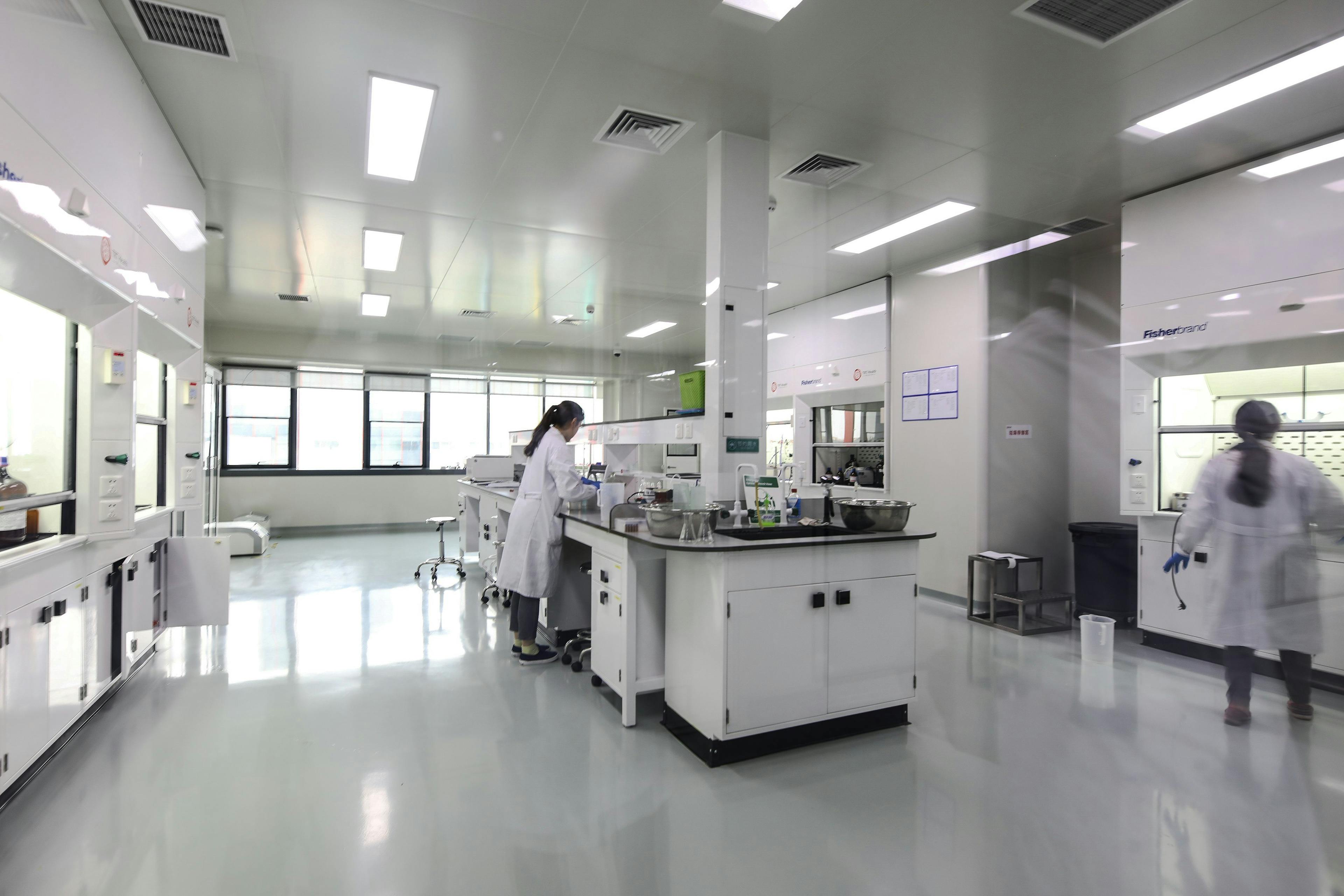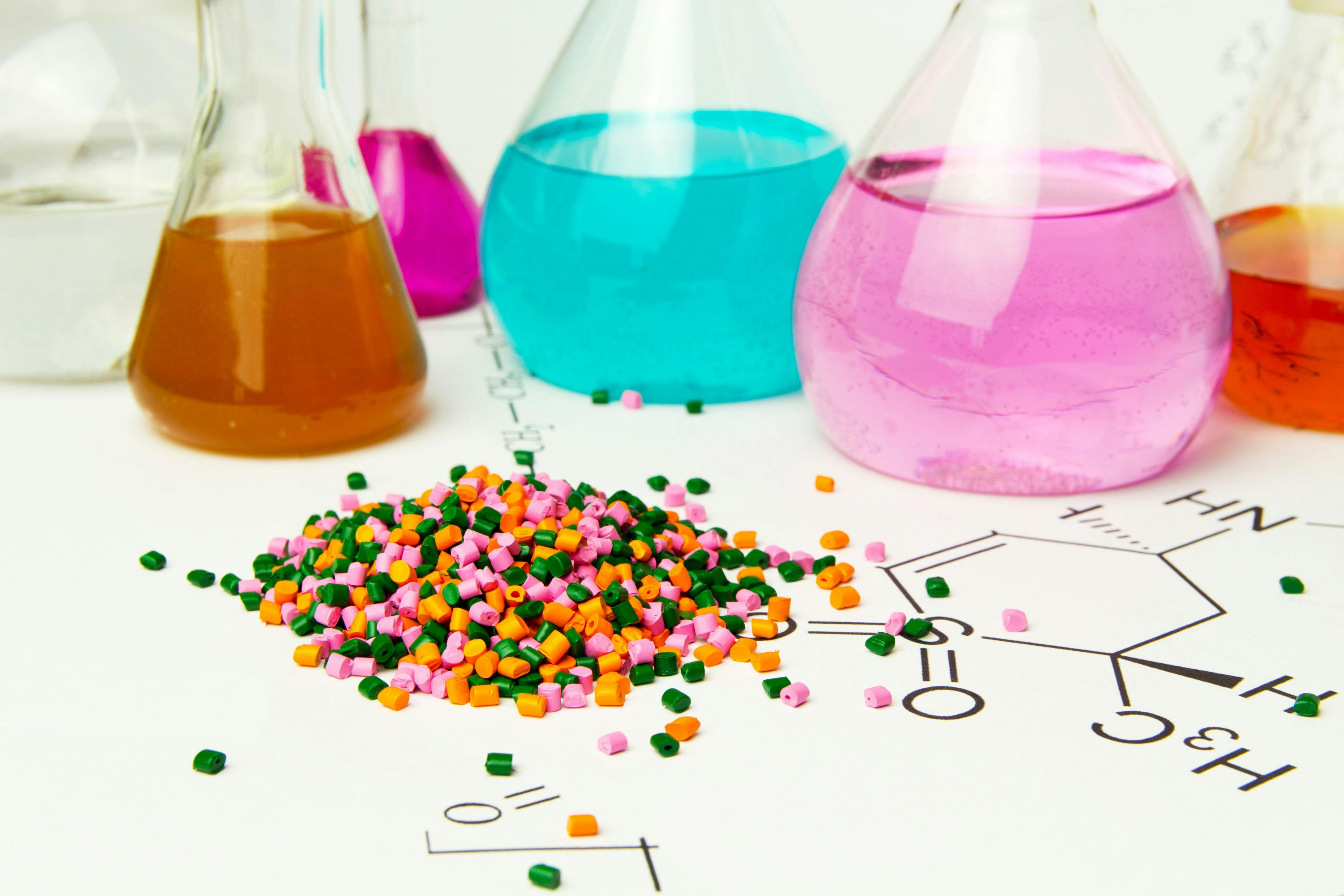New Gas Chromatography Products for 2021–2022
I am pleased to present our annual review of new products in gas chromatography (GC), introduced between spring 2021 and spring 2022. With the Covid-19 pandemic still impacting travel and conferences, the 72nd meeting of the Pittsburgh Conference on Analytical Chemistry and Applied Spectroscopy (Pittcon) from March 8–12, 2022, originally scheduled to take place in Atlanta, Georgia, was canceled at the last minute. Although many of the technical presentations were conducted virtually, there was not sufficient time to re-tool the exposition, so this review was conducted virtually for the second year in a row.
Pittcon 2023 will be held from March 18–22, 2023, in Philadelphia, Pennsylvania. Although this year we are moving out from the pandemic more slowly than was anticipated, I challenge everyone to attend a professional conference over the next year. Also, everyone should consider participating in a local or regional chromatography discussion group or local section of
the American Chemical Society (ACS) meeting. In the remainder of 2022,
I will not be traveling far, but dipping my toes back into conference attendance. I will be attending both the Middle Atlantic Regional ACS meeting in Ewing, New Jersey (NJ), and the ACS Green Chemistry Institute Meeting in Reston, Virginia, both in June 2022, as well as the Eastern Analytical Symposium in Princeton, NJ, in November 2022. I have used the increase of virtual conferences to attend additional meetings that I would not have attended otherwise because of the travel costs, but I will return to attending my usual set of in-person meetings as they come back. Two years of being stuck in a global pandemic were extremely difficult for conference organizers and for the many vendors, contractors, and economies that the conferences support. They need your help even more than last year. Conference and meeting attendance is still the best way to improve skills, learn about new techniques, train, and educate yourself.
In the specific space of gas chromatography (GC), I highly recommend the virtual 19th International GCxGC symposium, originally scheduled for Canmore, Alberta, Canada, from May 29 to June 2, 2022. This meeting will include any of the best minds in comprehensive two–dimensional GC (GCxGC) and GC, and it is of special interest to anyone who has heard about GCxGC and wants to learn more about it. The list of speakers is an international all-star list of top chromatographers. I also highly recommend LCGC Magazine's GC ChromTalks, also virtual, on May 24, 2022. We have five speakers, all of whom are all-stars in GC, and a live question and answer virtual session will serve as an opportunity for everyone to learn more about GC and to get their questions answered.
There was no virtual exposition at the virtual Pittcon this year. The virtual technical program, which was much more limited, included key invited and award sessions and ran throughout the month of March. It was presented at no charge, although registration was required to obtain links to the talks. GC continues to have a strong presence on the conference circuit and in the literature. Topics such as cannabis analysis, biofuels, food and beverages, forensics, pharmaceuticals, and general applications of both GC and GCxGC are seen in a robust publication space. GC itself is trending toward being less the driver of research than its application to scientific problems. The most effective online search for GC today probably begins with phrases such as “GC of ____,” with your analyte or sample of interest filling in the blank.
The information presented in this article is based on vendors’ responses to questionnaires and additional information from press releases, websites, and product literature, not on the actual use or experience of the author. Every effort has been made to collect accurate information, but because of the preliminary nature of some of the material, LCGC North America cannot be responsible for errors or omissions. This column cannot be considered a complete record of all new GC products introduced in the past year because not all vendors responded to the questionnaire and not all the submitted information is necessarily included here because of the limited available space and the editors’ judgment as to its suitability. Table I provides a listing of the vendors highlighted in this review, some of whom are lesser known in the areas they are listed, showcased new products this year, or both. For a more complete picture of the GC space today, I encourage you to review the three previous years’ reviews (1–3).
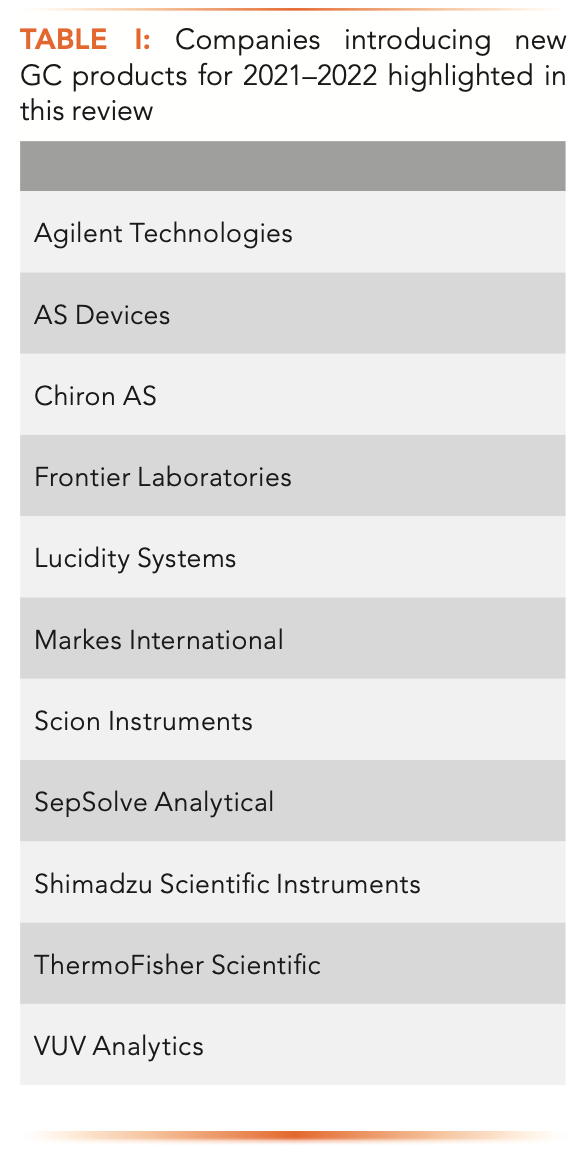
In new instruments, trends seen over the past few years toward smaller, more automated systems, more specialized systems, and spectrometric detectors continue this year. Table II shows a list of new complete instruments introduced over the past year. All these systems are designed with optimizing and simplifying workflows, operation, and maintenance in mind. One concern is that systems are becoming so automated and convenient to use that training and education may be viewed as less necessary, which is a seemingly reasonable view until something goes awry.
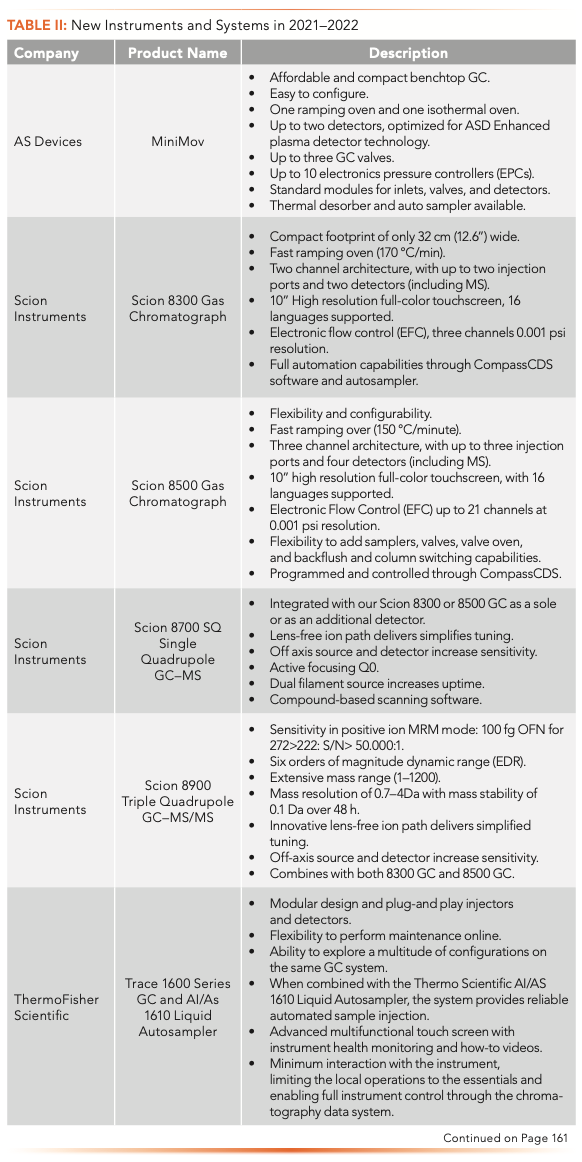
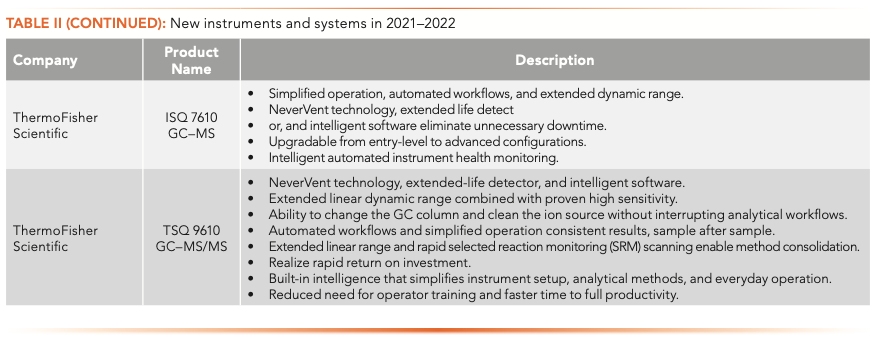
Stationary phases continue to be updated by most of the vendors, with nearly all making incremental improvements or showing new applications in their online application note libraries. The one new stationary phase that appeared in this year’s survey was a packed column phase, indicating the continued need for high retentivity columns for light gas separations. This phase is highlighted in Table III. The incremental trend in capillary column stationary phase development for specific specialized problems continues. The 2021 review included two phases for fatty acid methyl esters and dioxins. Users are encouraged to contact and keep up with your column vendor; new phases and improvements are happening continuously.

In 2021–2022, developments in new accessories and consumables continue to trend toward simplifying analysis and making chromatographers’ work easier. Manufacturers of accessories and consumables are also developing ways to improve inertness in the sample flow path. Accessories and consumables for sample preparation is not covered broadly here. For more information on sample preparation, see the specific sample preparation article by Doug Raynie in the next issue of LCGC (4). As with the GC reviews, it is worthwhile to review the past two years as well for a complete picture of sample preparation products (5,6). Table IV provides a listing of products released in the past year that illustrate this trend. Many of the accessories are instrumental improvements in detectors and sampling devices.
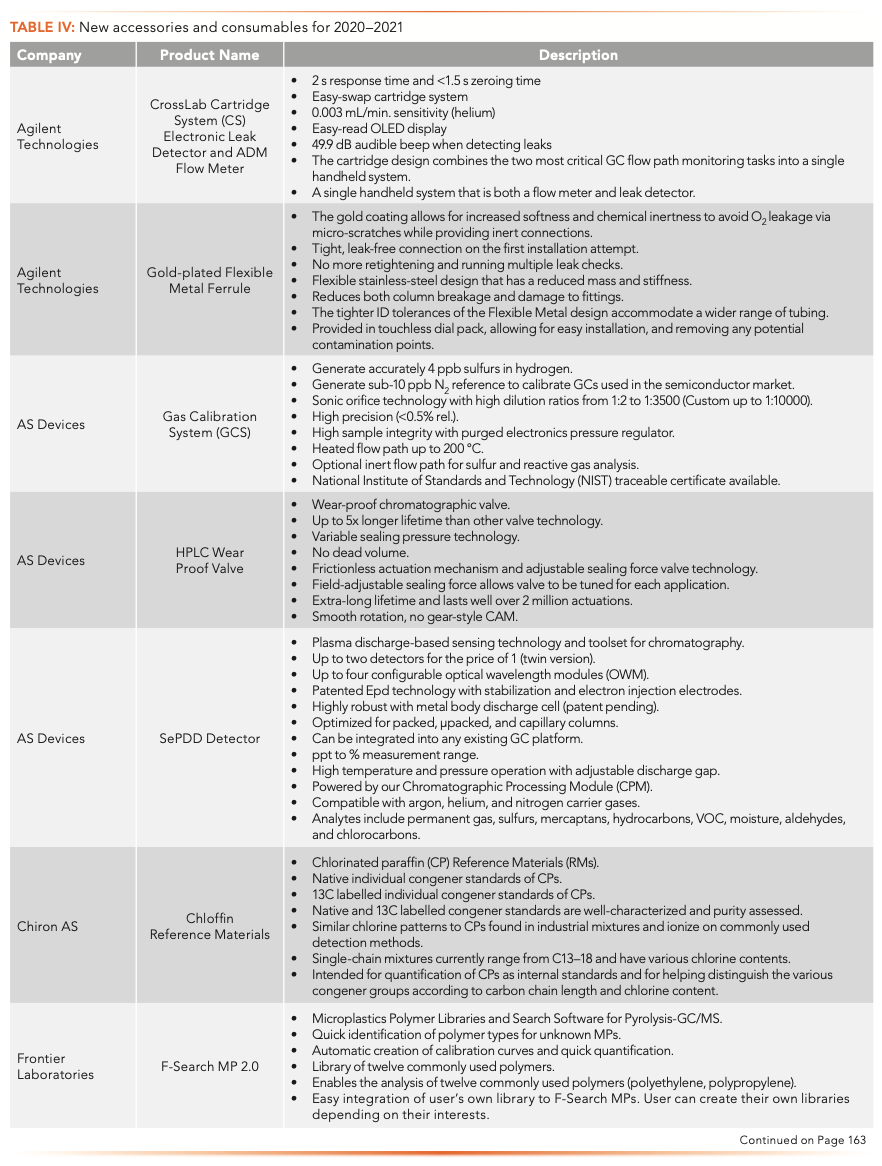

Our emergence from the pandemic provides more opportunities to continue education and training. Besides numerous short courses associated with Pittcon and other major conferences, many additional training and educational resources are available for 2022. The pandemic has resulted in much growth in online training and seminar offerings by vendors and training organizations, so check with your vendor. Opportunities for in-person short courses, seminars, and training are beginning to start up again and are offered by most major instrument vendors and through many conferences and organizations, including ACS, the Eastern Analytical Symposium (Princeton, NJ, November 2022), and local and regional chromatography discussion groups. LCGC North America’s online training system, CHROMAcademy, launched a completely revamped online platform in 2020 and is again hosting ChromTalks, a virtual symposium in May 2022.
As GC nears its 70th birthday, development and innovation are ongoing and include all areas: sampling and supplies, new instruments, columns, detectors, data systems, and educational opportunities. I look forward to more innovation and advancements in the 2020s, and I hope to see many of you at EAS 2022 in my home state of New Jersey or at Pittcon 2023 in Philadelphia.
References
(1) N.H. Snow, LCGC N. Am. 39(4), 167–171 (2021).
(2) N.H. Snow, LCGC N. Am. 38(5), 277–290 (2020).
(3) J.V. Hinshaw, LCGC N. Am. 37(5), 304–309 (2019).
(4) D.E. Raynie, LCGC N. Am. 40(5), in production (2022).
(5) D.E. Raynie, LCGC N. Am. 39(5), 228–231 (2021).
(6) D.E. Raynie, LCGC N. Am. 38(5), 269–274 (2020).
ABOUT THE AUTHOR
Nicholas H. Snow is the Founding Endowed Professor in the Department of Chemistry and Biochemistry at Seton Hall University, and an Adjunct Professor of Medical Science. During his 30 years as a chromatographer, he has published more than 70 refereed articles and book chapters and has given more than 200 presentations and short courses. He is interested in the fundamentals and applications of separation science, especially gas chromatography, sampling, and sample preparation for chemical analysis. His research group is very active, with ongoing projects using GC, GC–MS, two-dimensional GC, and extraction methods including headspace, liquid–liquid extraction, and solid-phase microextraction. Direct correspondence to: LCGCedit@mmhgroup.com

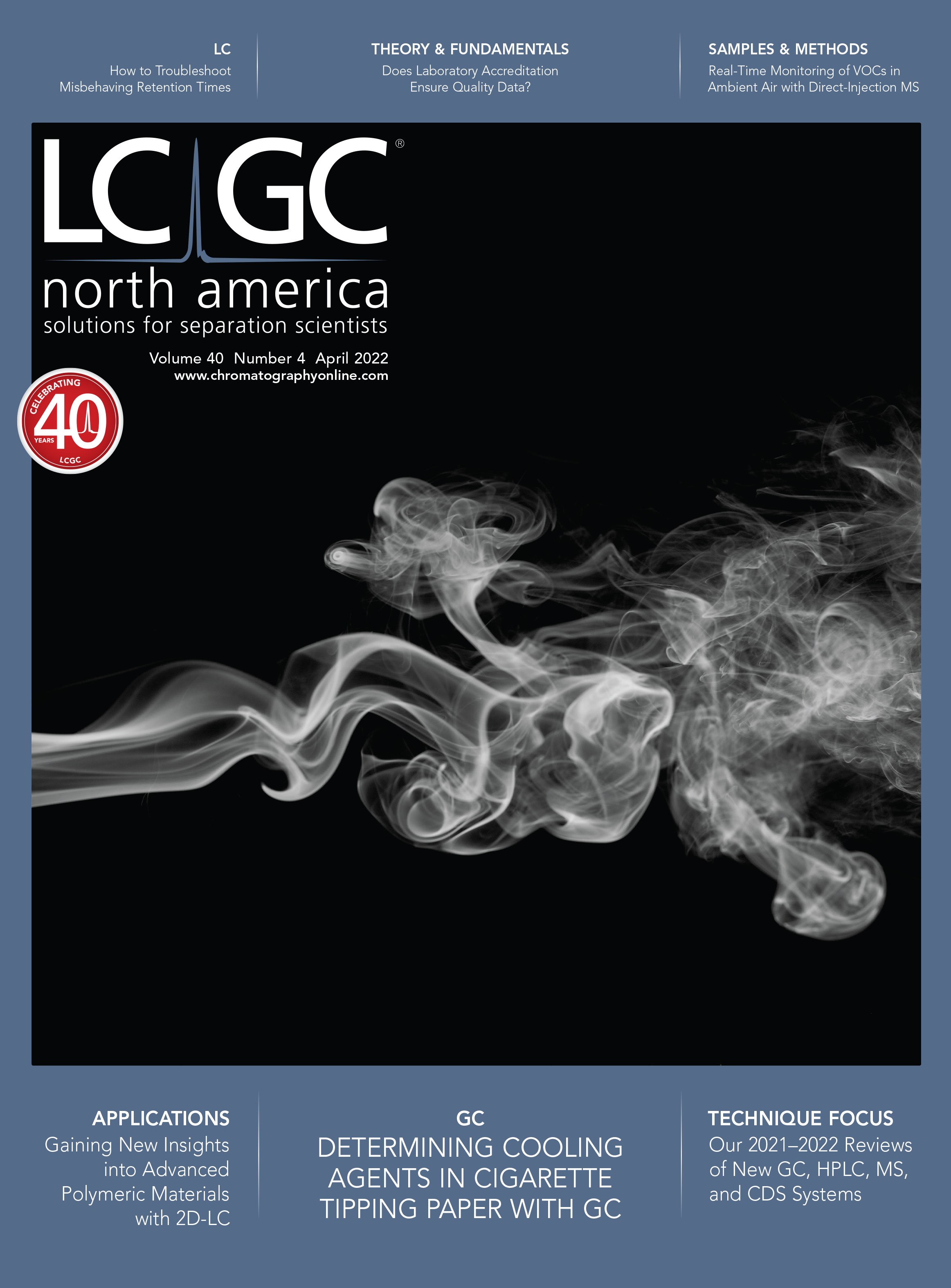
Detecting Hyper-Fast Chromatographic Peaks Using Ion Mobility Spectrometry
May 6th 2025Ion mobility spectrometers can detect trace compounds quickly, though they can face various issues with detecting certain peaks. University of Hannover scientists created a new system for resolving hyper-fast gas chromatography (GC) peaks.
Altering Capillary Gas Chromatography Systems Using Silicon Pneumatic Microvalves
May 5th 2025Many multi-column gas chromatography systems use two-position multi-port switching valves, which can suffer from delays in valve switching. Shimadzu researchers aimed to create a new sampling and switching module for these systems.
New Study Reviews Chromatography Methods for Flavonoid Analysis
April 21st 2025Flavonoids are widely used metabolites that carry out various functions in different industries, such as food and cosmetics. Detecting, separating, and quantifying them in fruit species can be a complicated process.

.png&w=3840&q=75)

.png&w=3840&q=75)



.png&w=3840&q=75)



.png&w=3840&q=75)




